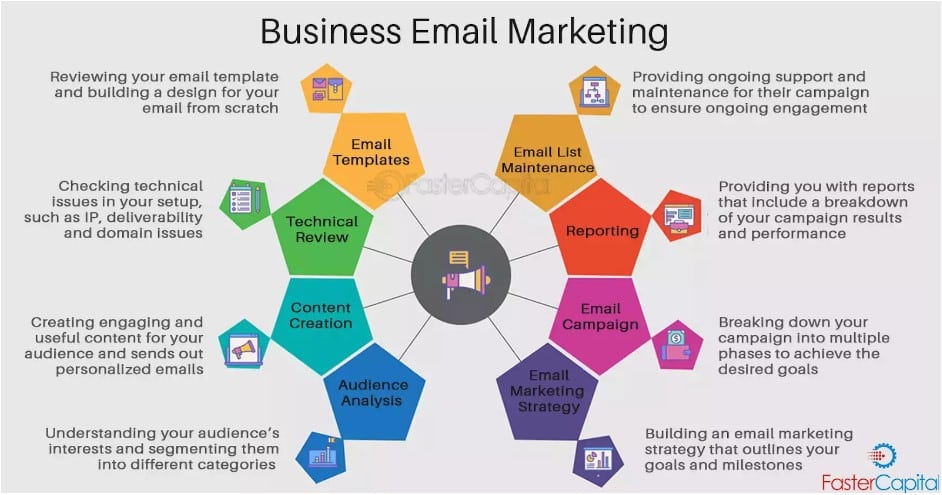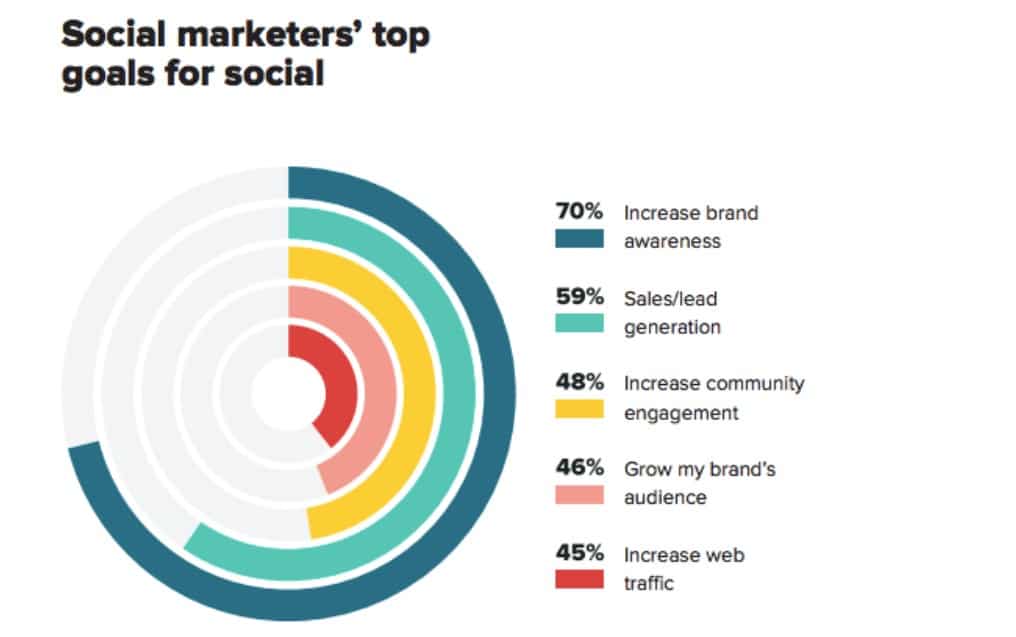Generating business-to-business (B2B) leads is the lifeblood of sustainable growth for enterprises across industries. Whether you’re a startup or a well-established corporation, the ability to identify and engage potential clients or partners is pivotal to your success. In this competitive landscape, implementing effective lead-generation strategies is more critical than ever.
To excel in B2B lead generation, it’s essential to begin with a clear understanding of your Ideal Customer Profile (ICP). By delineating the specific characteristics of your target audience, such as industry, company size, and key decision-makers, you can tailor your efforts to resonate with those who are most likely to benefit from your products or services.
Content marketing plays a pivotal role in this process. Crafting valuable and informative content that addresses the pain points and challenges of your prospective clients not only establishes your company as a thought leader but also draws in potential leads. This content can take various forms, from blog posts and ebooks to webinars and whitepapers, each designed to cater to the diverse preferences of your audience.
Additionally, email marketing remains a potent tool for lead generation. Building and nurturing a carefully curated email list allows you to deliver personalized and relevant content directly to your prospects’ inboxes, guiding them through the sales funnel.
Social media engagement, particularly on platforms like LinkedIn, enables you to connect with decision-makers, participate in industry conversations, and showcase your expertise. Furthermore, utilizing search engine optimization (SEO) and search engine marketing (SEM) strategies can drive organic and targeted traffic to your website, capturing leads actively seeking the solutions you offer.
In this article, we’ll delve deeper into these practices and provide you with ten actionable tips to supercharge your B2B lead generation efforts, helping you thrive in a competitive business landscape.

The Ideal Customer Profile (ICP)
It is a detailed and carefully crafted description of the hypothetical customer or client that a business or organization aims to target and serve most effectively. It serves as a strategic blueprint that helps companies identify and focus their marketing, sales, and product development efforts on the individuals or entities that are most likely to benefit from their offerings.
To create an ICP, businesses typically consider a range of factors, including:
- Demographics: This encompasses details like age, gender, location, and job titles. A B2B ICP may include information about the industry, company size, and specific roles within target organizations.
- Psychographics: Understanding the values, motivations, challenges, and pain points of the ideal customer is crucial. What are their goals, fears, and aspirations?
- Behavioral patterns: What behaviors, preferences, and habits do your ideal customers exhibit? How do they typically make purchasing decisions?
- Technographic data: In the context of B2B, this involves identifying the technology and software solutions your target companies use.
- Firmographics: Specific information about the company, such as revenue, number of employees, and location, may be relevant for B2B ICPs.
- Buying cycle: Understand the stages and timeline of the buying process for your ideal customers. This helps in tailoring your marketing and sales strategies accordingly.
Creating a well-defined ICP allows businesses to allocate resources more efficiently, personalize marketing messages, and enhance their product or service offerings to align with the needs of their most promising customer segments. It ultimately leads to better lead generation, higher conversion rates, and more satisfied customers, fostering long-term success and growth.
Content Marketing
Content marketing is a strategic marketing approach that focuses on creating and distributing valuable, relevant, and consistent content to attract and engage a target audience. This content can take various forms, including blog posts, articles, videos, infographics, podcasts, and more, and it is typically shared through various online channels, such as websites, social media, email, and content platforms.
The primary goals of content marketing are to build brand awareness, establish authority and expertise in a particular industry or niche, and ultimately drive profitable customer actions, such as lead generation, conversion, and customer retention. Unlike traditional advertising, content marketing seeks to provide value to the audience rather than directly promote products or services.
Effective content marketing involves understanding the needs, interests, and pain points of the target audience and creating content that addresses those concerns. It requires a well-thought-out content strategy, consistent production, and careful distribution to reach the right people at the right time.
Successful content marketing not only helps businesses connect with their audience but also fosters trust and loyalty. By offering valuable insights, solving problems, and providing informative and entertaining content, businesses can build meaningful relationships with their customers and prospects, leading to long-term success and sustainable growth in the digital age.
It is worthwhile to note that AI can be vital for content marketing success. For example, an AI writer can help you craft compelling blogs and other content.
Email Marketing
Email marketing is a digital marketing strategy that involves sending targeted emails to a group of recipients to build and nurture relationships, drive engagement, and achieve specific business objectives. It is a powerful and cost-effective tool for businesses of all sizes to communicate with their audience, promote products or services, and achieve various marketing goals.

Effective b2b email marketing involves several key elements:
- Audience segmentation: Dividing your email list into distinct segments based on demographics, behaviors, or preferences allows for highly personalized and relevant messaging.
- Compelling content: Crafting engaging and valuable email content, including text, images, and multimedia, is crucial for capturing recipients’ attention and encouraging them to take desired actions.
- Automation: Email marketing platforms often offer automation capabilities, enabling businesses to send targeted messages at the right time, such as welcome emails, drip campaigns, and personalized recommendations.
- A/B testing: Testing different email elements, such as subject lines, CTAs, and content variations, helps optimize email performance and conversion rates.
- Analytics and tracking: Monitoring email campaign metrics like open rates, click-through rates, and conversion rates provides valuable insights for refining future campaigns.
- Compliance: Adhering to email marketing regulations, such as CAN-SPAM and GDPR, ensures that emails are sent ethically and legally.
Email marketing can be used for a wide range of purposes, including lead generation, customer acquisition and retention, brand promotion, event marketing, requesting a meeting, and product announcements. It remains a highly effective and measurable marketing channel, allowing businesses to stay connected with their audience and drive desired actions while maintaining a direct and cost-efficient line of communication.
Social Media Engagement
Social media marketing refers to the interactions and connections that occur between individuals, brands, and communities on various social media platforms. It’s a vital component of digital marketing and branding strategies that aim to foster relationships, build brand loyalty, and achieve specific business objectives.

Key elements of social media engagement include:
- Content sharing: Regularly posting relevant and valuable content, such as articles, images, videos, and infographics, to engage and educate your audience.
- Audience interaction: Respond promptly to comments, messages, and mentions from your followers, demonstrating a commitment to customer service and engagement.
- Community building: Cultivating a sense of community among your followers by facilitating discussions, hosting Q&A sessions, and encouraging user-generated content.
- Personalization: Tailoring your content and interactions to suit the interests and preferences of different segments of your audience.
- Social listening: Monitoring social media platforms for mentions of your brand or industry keywords, enabling you to respond to trends, feedback, and potential issues.
- Influencer collaboration: Partnering with influencers in your industry or niche to reach a wider and more engaged audience.
- Analytics and metrics: Measuring engagement through likes, comments, shares, click-through rates, and conversion rates to assess the effectiveness of your social media efforts and improve your overall business performance.
Successful social media engagement can lead to increased brand awareness, improved customer loyalty, higher website traffic, and ultimately, more conversions and revenue. It requires a genuine commitment to building relationships, delivering value, and actively participating in the conversations and communities relevant to your brand or industry.
LinkedIn Prospecting
LinkedIn prospecting is a strategic approach to finding and connecting with potential clients, partners, or leads on the professional networking platform, LinkedIn. It is a powerful method for B2B (Business-to-Business) lead generation and relationship building. LinkedIn offers a unique opportunity to identify and engage with key decision-makers and industry professionals.
Key aspects of LinkedIn prospecting include:
- Profile optimization: Ensure your LinkedIn profile is complete and professional, and highlights your expertise and offerings. This helps establish credibility when reaching out to prospects.
- Advanced search: Use LinkedIn’s robust search filters to identify and narrow down prospects based on criteria such as industry, job title, location, and company size.
- Connection requests: Send personalized connection requests to potential leads, expressing your interest in connecting and explaining how you can provide value to them.
- Engagement: Actively engage with your connections by liking, commenting on, and sharing their posts and updates. This helps you stay on their radar and build rapport.
- InMail: Use InMail messages to send personalized messages to LinkedIn members, not in your immediate network. Craft compelling messages that address their pain points and offer solutions. You can also enrich LinkedIn profiles and SalesNavigator lists with compliant B2B data to build winning cadences.
- LinkedIn groups: Join and participate in LinkedIn groups related to your industry or target audience. Engaging in group discussions can help you connect with like-minded professionals.
- Content sharing: Share valuable content, such as articles, whitepapers, or webinars, to demonstrate your expertise and attract prospects interested in your industry.
- Analytics: Monitor your LinkedIn prospecting efforts by tracking profile views, connection acceptance rates, and response rates to refine your approach over time.
LinkedIn lead generation and prospecting is about building meaningful connections and nurturing relationships rather than solely focusing on immediate sales pitches. By approaching prospects authentically and providing value, you can gradually convert connections into leads and, ultimately, into valuable business relationships.
SEO and SEM
SEO (Search Engine Optimization) and SEM (Search Engine Marketing) are two essential digital marketing strategies that focus on improving a website’s visibility in search engine results pages (SERPs). While they share the goal of increasing web traffic and enhancing online presence, they differ in their approach and execution.
SEO involves optimizing a website’s structure, content, and various on-page and off-page elements to improve its organic or natural search engine rankings. Key aspects of SEO include:
- Keyword research: Identifying and targeting relevant keywords and phrases that potential visitors are likely to search for. It’s best to focus your SEO keywords strategy around high-intent keywords that describe your product as the critical solution to users’ problem. That way, you’ll attract valuable traffic that is more likely to convert.
- On-page optimization: Optimizing webpage content, meta tags, headings, and images to make them search-engine-friendly.
- Content creation: Developing high-quality, informative, and engaging content that caters to both users and search engine algorithms.
- Link building: Acquiring quality backlinks from reputable websites to enhance domain authority and trustworthiness.
- Technical SEO: Ensuring that a website’s technical aspects, such as site speed, mobile-friendliness, and schema markup, are optimized for search engines.
SEM (Search Engine Marketing), on the other hand, involves paid advertising efforts to gain immediate visibility in search engine results. The most common form of SEM is pay-per-click (PPC) advertising, where advertisers bid on keywords to display their ads at the top of search results, the most common PPC ads are Google Ads, Meta or Microsoft Advertising. Key components of SEM include:
- Keyword selection: Choosing relevant keywords for your ads to target specific audiences.
- Ad creation: Crafting compelling and relevant ad copy that encourages clicks and conversions.
- Bid management: Setting and adjusting bids to ensure optimal ad placement and budget allocation.
- Ad campaign monitoring: Regularly tracking and analyzing ad performance to refine campaigns for better results.
- Ad extensions: Enhancing ads with additional information like site links, callouts, and location information.
Both SEO and SEM are integral to a comprehensive digital marketing strategy. SEO focuses on long-term, sustainable growth by improving organic search rankings, while SEM offers immediate visibility through paid advertising. Many businesses use a combination of both strategies to maximize their online presence and attract a diverse range of potential customers.
Networking and Events
Networking and events are essential components of business growth and relationship-building strategies. They provide opportunities for individuals and organizations to connect, share knowledge, and foster valuable connections within their industry or community.
Networking involves building and maintaining professional relationships, both in person and online, to exchange information, support, and opportunities. Key aspects of networking include:
- Events and conferences: Attending industry-specific events, conferences, seminars, and trade shows to meet potential partners, clients, and collaborators.
- Online networking: Utilizing social media platforms like LinkedIn to connect with professionals, join relevant groups, and engage in discussions.
- Business associations: Becoming a member of industry-specific associations and organizations that offer networking events and resources.
- Referrals and introductions: Leveraging existing connections to gain introductions to potential partners or clients.
Events are structured gatherings designed for various purposes, including networking, education, promotion, and community building. Key elements of events include:
- Purpose and planning: Defining the goals and objectives of the event, whether it’s a product launch, educational seminar, or networking meetup.
- Logistics: Organizing event logistics, such as venue selection, scheduling, catering, and technology support.
- Content and speakers: Securing relevant speakers, presenters, or panelists to provide valuable insights and information.
- Promotion: Marketing the event through various channels to attract the target audience and encourage attendance.
- Engagement: Creating opportunities for attendees to interact, learn, and network, fostering connections and knowledge sharing.
Effective networking and events can lead to numerous benefits, including new business opportunities, collaborative ventures, increased brand visibility, and personal and professional growth. These activities play a crucial role in building a robust and supportive network that can help individuals and organizations thrive in their respective industries.
Moreover, in the digital age, leveraging tools like UPC (Universal Product Code) can further enhance networking and event experiences. The UPC system, commonly associated with barcoding, can streamline event registrations, facilitate swift check-ins, and enable exhibitors to effortlessly capture lead details. Incorporating UPC technology not only brings efficiency but also demonstrates an organization’s commitment to leveraging modern technology for seamless interactions. Such innovations can elevate the attendee experience, making events more interactive, data-driven, and memorable, ultimately leading to fruitful B2B lead generation.
Referral Programs
Referral programs are strategic marketing initiatives that incentivize existing customers, employees, or partners to recommend a product, service, or company to others within their network. These programs leverage the power of word-of-mouth marketing and personal recommendations to acquire new customers or clients.
Critical components of referral programs include:
- Incentives: Offering rewards or incentives to those who refer others. These incentives can take various forms, such as discounts, cash rewards, gift cards, or exclusive access to products or services.
- Tracking and analytics: Employing technology to track referrals and attribute them to the referring party. This ensures that rewards are given accurately.
- Clear communication: Communicating the program’s terms and conditions to both referrers and referees, ensuring transparency and trust.
- Ease of sharing: Providing tools and resources that make it easy for participants to share referrals, such as referral links, social sharing buttons, or email templates.
- Reward fulfillment: Ensuring prompt and hassle-free delivery of rewards to referrers once a successful referral is made.
- Monitoring and optimization: Continuously monitoring the program’s performance and making adjustments based on data and feedback to maximize its effectiveness.
Referral programs are highly effective because they tap into the trust and credibility that individuals have within their personal and professional networks. When someone receives a recommendation from a trusted source, they are more likely to consider and act on it, leading to a higher conversion rate compared to other marketing methods.
These programs not only help acquire new customers but also encourage loyalty and advocacy among existing ones. When executed well, referral programs can be a win-win for all parties involved—the company, the referrer, and the referee.
Lead Magnets and Gated Content
Lead magnets and gated content are powerful tools in digital marketing for capturing valuable leads and building an engaged audience. They involve offering something of value to website visitors in exchange for their contact information, such as their email addresses. Here’s a closer look at these concepts:
Lead Magnets
A lead magnet is a compelling and relevant incentive that entices visitors to provide their contact information. Common types of lead magnets include ebooks, whitepapers, webinars, templates, checklists, and free trials. Lead magnets should address a specific pain point or offer a solution that aligns with the audience’s interests. They are typically promoted on websites, landing pages, and through various marketing channels.
Gated Content
Gated content refers to valuable resources or information hidden behind a virtual gate or a form. To access the content, visitors must fill out a form with their contact details. Gated content serves two main purposes: it helps businesses collect lead information, and it provides a way to qualify leads based on their interest in the topic. Gated content is often used at different stages of the sales funnel, from awareness to consideration and decision.
Both lead magnets and gated content are effective for building email lists, nurturing leads, and guiding prospects through the buyer’s journey. They allow businesses to provide value upfront, establish credibility, and initiate meaningful interactions with potential customers. However, it’s crucial to strike a balance between providing valuable content and asking for contact information, as overly aggressive gating can deter visitors. Successful implementation involves crafting compelling offers and strategically placing them in the customer journey to maximize lead generation.
Lead Scoring and Automation
Lead Scoring and Automation are integral components of modern marketing and sales strategies, designed to streamline processes, improve efficiency, and prioritize leads for more effective engagement.
Lead Scoring is the practice of assigning a numerical value or score to leads based on their characteristics and behavior. This helps organizations identify which leads are more likely to convert into customers. Factors considered in lead scoring may include demographics, engagement level, website activity, email interactions, and more. By assigning scores, teams can focus their efforts on high-potential leads, saving time and resources.
Automation involves using technology and software to automate repetitive tasks and marketing processes. In the context of lead management, marketing automation platforms can be employed to send personalized emails, nurture leads with targeted content, and track lead behavior across multiple touchpoints. Automation ensures that leads receive timely and relevant communications, improving the chances of conversion.
Together, lead scoring and automation enable businesses to:
- Prioritize leads: By identifying which leads are most likely to convert, teams can focus their efforts on those with the highest scores, improving conversion rates.
- Nurture leads: Automation allows for personalized, automated lead nurturing through tailored content and drip campaigns, keeping leads engaged over time.
- Efficiency: Automation reduces manual labor, saving time and ensuring consistent communication with leads.
- Data-driven decisions: Lead scoring provides valuable data for making informed decisions about marketing and sales strategies.
- Improved ROI: By concentrating resources on high-scoring leads, organizations can achieve a better return on their marketing investments.
In summary, lead scoring and automation are powerful tools for managing and converting leads efficiently. They help organizations deliver the right message to the right lead at the right time, ultimately driving higher conversion rates and revenue.
Conclusion
In conclusion, B2B lead generation is the lifeblood of sustained growth and success for businesses operating in today’s competitive landscape. The best practices and tips outlined above provide a roadmap to navigate this dynamic and ever-evolving field effectively.
By defining your Ideal Customer Profile (ICP), creating compelling content, and leveraging various marketing channels like email, social media, and LinkedIn, you can strategically reach and engage with your target audience. Additionally, optimizing your website for search engines, attending networking events, and implementing referral programs will help you cast a wider net and foster valuable connections.
The use of lead magnets and gated content ensures that you not only attract potential leads but also capture their information for nurturing and conversion. Meanwhile, lead scoring and automation streamline your lead management processes, enabling you to focus your efforts on prospects with the highest likelihood of conversion.
Ultimately, B2B lead generation is an ongoing journey of adaptation and improvement. Regularly measuring and analyzing your efforts, refining your strategies based on data-driven insights, and staying attuned to industry trends will be crucial in maintaining a consistent flow of high-quality leads into your sales pipeline.
Incorporating these best practices and tips into your B2B lead generation strategy can set your business on a path to sustained growth, enhanced brand authority, and lasting success in the B2B marketplace. Remember that success may not come overnight, but with persistence and a commitment to providing value to your audience, it will undoubtedly follow.



